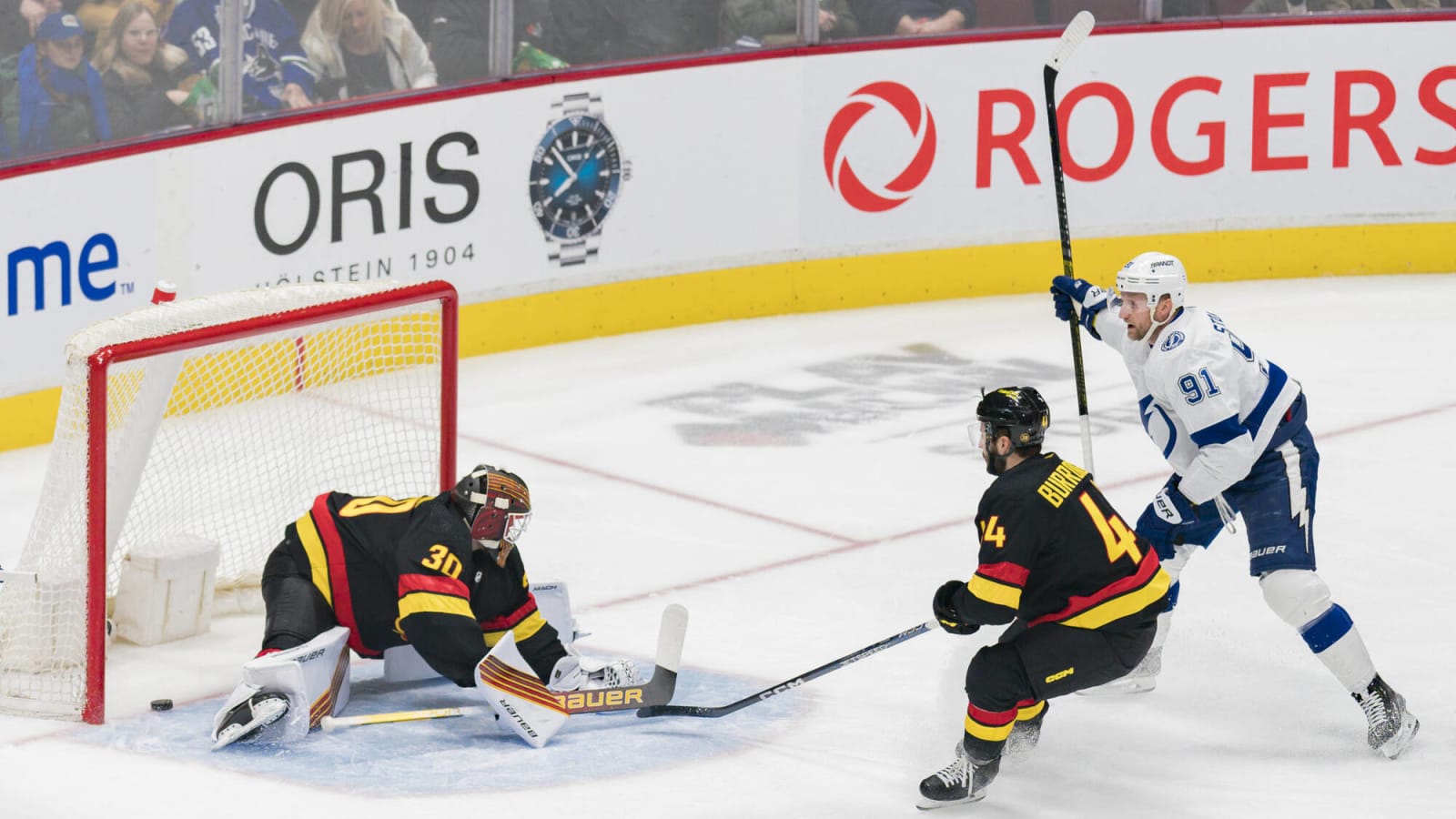
The Canucks’ 5-2 loss to the Tampa Bay Lightning on Wednesday couldn’t have had a more predictable outcome if it were scripted.
The Lightning took a big early 4-0 lead, buoyed by Steven Stamkos’ 500th NHL goal, and never looked back. The Canucks were able to pick up a few goals in garbage time as the Lightning eased off, but the final result was never in doubt.
This has been a recurring theme throughout the Canucks’ season. After the early season fiascos surrounding blown leads, they’ve reverted back into a team that gives up the first goal and can’t recover.
Like clockwork, the same thing happens. The Canucks fall behind by an insurmountable lead. Their better opponent, feeling comfortable that the game has been all but wrapped up, puts the car in cruise control during the final frame.
The Canucks are given the space to mount part of a comeback, sometimes even getting within a goal, but it ends up being all for naught.
Even on Wednesday, the comeback was based on opportunistic plays. The Canucks may have outshot the Lightning in the third period, but the final tally was a lowly 9-5.
But it looked close in the late stages. Bruce Boudreau pulled Collin Delia for an extra attacker down by two with a few minutes to go, but it merely drew out the process until Steven Stamkos netted his hat trick goal.
And in some ways, the fact that it looked close is worse than the result itself. It can give the people in charge of decision-making a semblance of belief; the idea that if a couple of bounces fall differently, the result would flip.
But that goes against the actual direction of play. If the Canucks and Lightning had been trading goals back and forth before a pair of Tampa empty netters, the 5-2 result wouldn’t have been indicative of the actual close nature of the game. On Wednesday it was.
And the Canucks’ new front office has already shown they’re susceptible to falling for a small sample size of games. After preaching changes to the roster before the team went on a hot streak during the second half of the year, Jim Rutherford and Patrik Allvin made very little meaningful change to the team’s core during the offseason.
Fast forward to today, and the team is struggling just as badly as they were in the first half of 2021-22.
That’s why leading into the rest of the season, starting with tonight’s game against the defending Stanley Cup champion Avalanche, it’s important for management to judge the team based on how they respond to adversity in real close games.
Mounting a late comeback might be very entertaining and leaves fans with a less bitter taste in their mouths on their way to catch the SkyTrain. But it doesn’t provide an accurate representation of what this team’s capabilities are.
Being able to put together a full 60-minute effort and hold a more talented team in a close game before the finish line is what separates the potentially capable teams from the pretenders. If they can find that extra gear of motivation in the early stages, it could set them up for more success in the second half of the season.
But if they can’t, it’ll be up to Rutherford and Allvin to recognize the difference and start making the tough decisions that’ll put them back on the road to true competitiveness. If Canucks management can’t see the patterns forming in front of them, they risk rebooting this script over and over again in the future.
More must-reads:
- This Game 7 loss is a different type of disappointment, failure for Maple Leafs
- NHL announces 2024 Selke Trophy finalists
- The 'MLB Rookies of the Year' quiz
Breaking News
Customize Your Newsletter
 +
+
Get the latest news and rumors, customized to your favorite sports and teams. Emailed daily. Always free!

